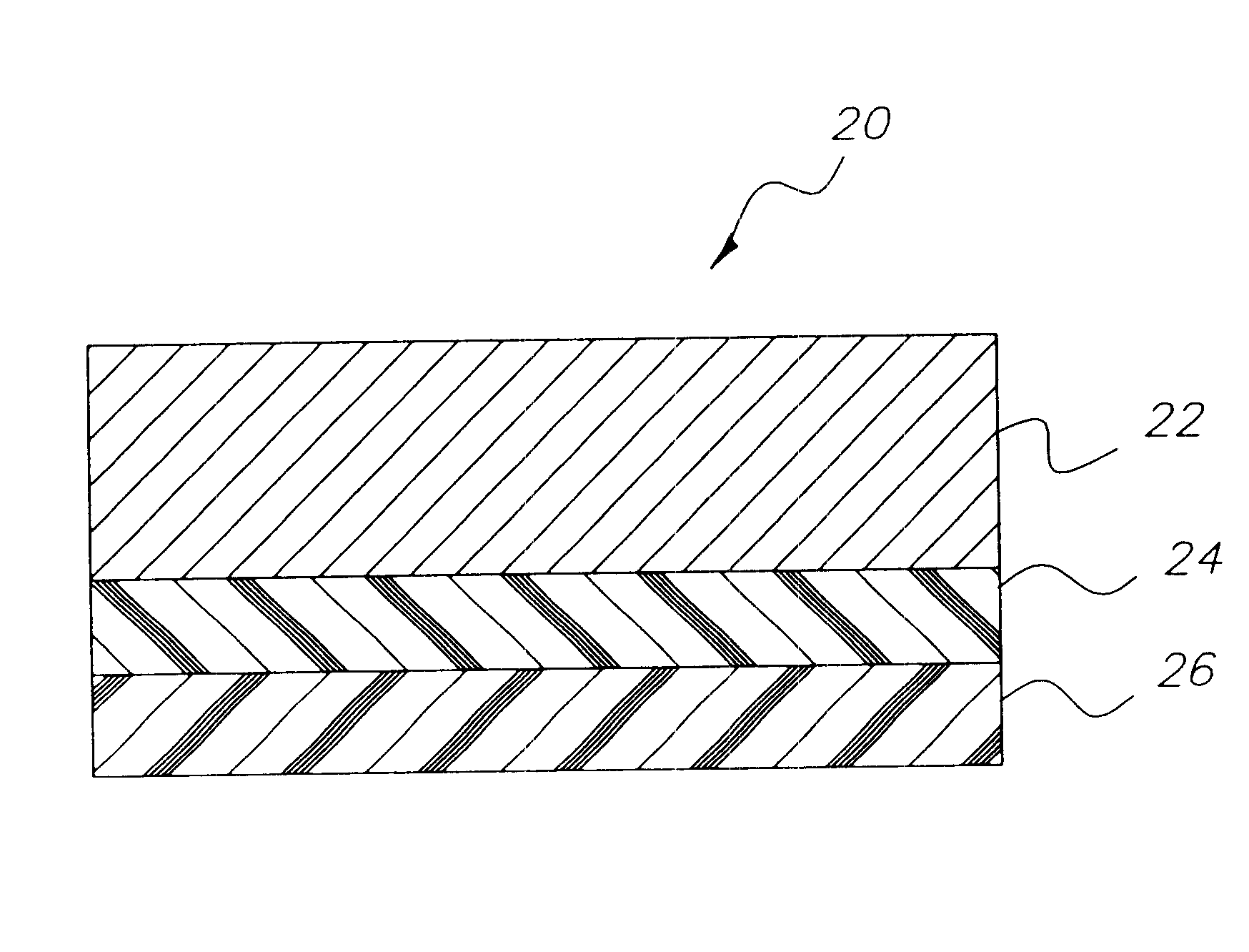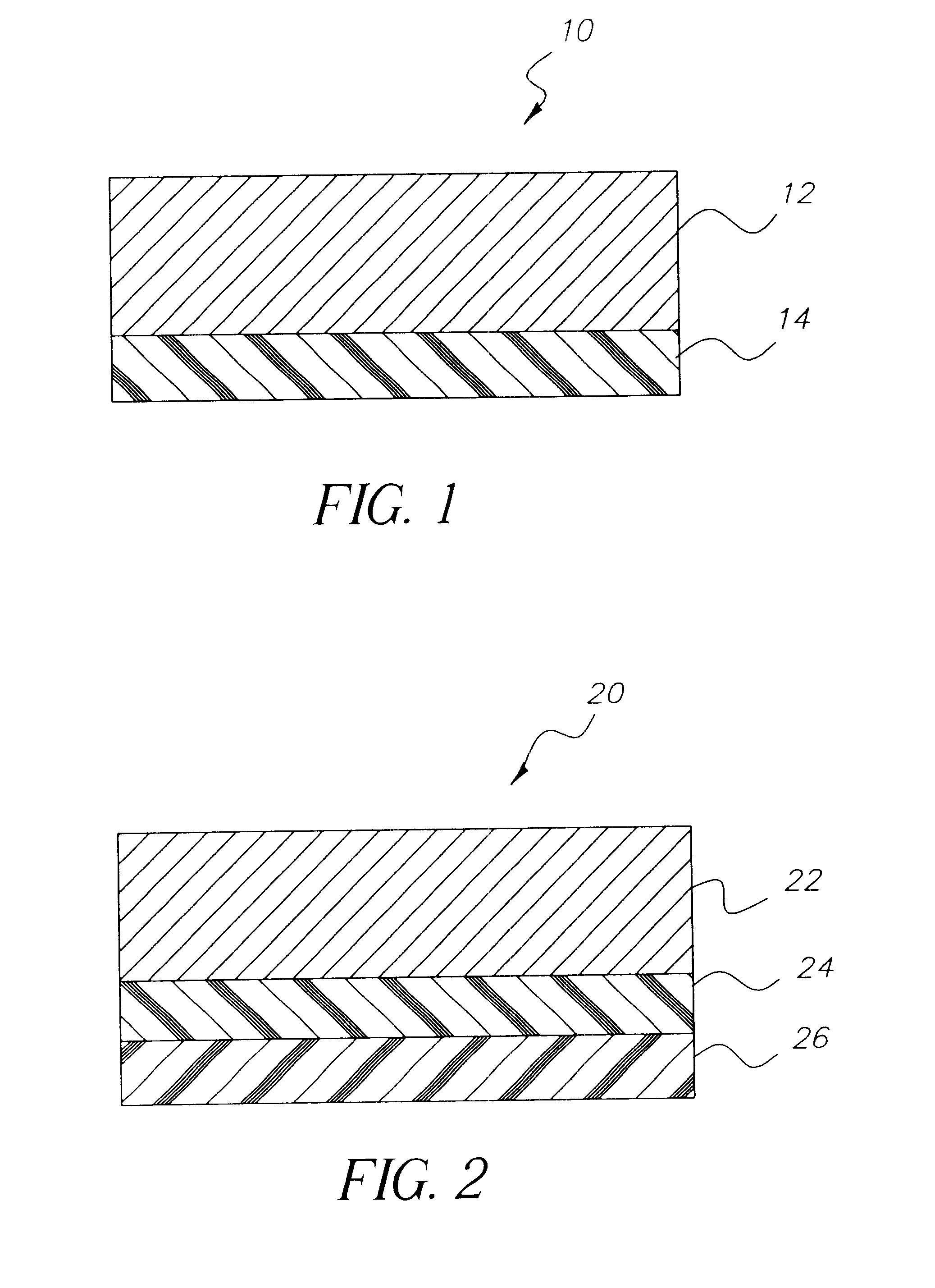Computer radiographic oncology portal imaging
a portal imaging and computer radiographic technology, applied in the direction of instruments, radiation beam directing means, conversion screens, etc., can solve the problems of normal tissues being overexposed, healthy tissues being overexposed, adversely affecting image quality,
- Summary
- Abstract
- Description
- Claims
- Application Information
AI Technical Summary
Problems solved by technology
Method used
Image
Examples
example 2
Scanning of Image Storage Assemblies
The imaging assemblies described in Example 1 were "erased" using the conventional "CR400 smart erase" feature. The original images in the phosphor layers were erased completely. A 0.25 mR exposure was then directed to each imaging assembly, followed by scanning using a conventional KODAK CR 400 reader. The results of scanned showed the 0.25 MR signal, but there was no evidence of the original images.
example 3
Using a conventional Varian, Inc. radiation therapy treatment machine, a 1.5-cm plastic patient tissue phantom was exposed through the "back" of each imaging assembly described in Example 1. A 10-cm plastic patient tissue phantom was on the front side of each imaging assembly. This provided calibrated exposures to each imaging assembly. Each of the imaging assemblies was exposed to 1 Rad, 3 Rads, 7 Rads, and 10 Rads in 10 cm square fields at the comers of the storage phosphor layers using 6 Mvp. We were surprised to observe that the 1-Rad signals in the storage phosphor layers behind each of the different lead screens were the same, .+-.3%. Surprisingly, the signal in the phosphor layer behind the copper screen (Control assembly) was 10% smaller.
The signal results in the imaging assemblies were the same for the other exposure levels. The imaging assemblies with the lead screens gave similar signals but the signal from the Control (copper) assembly was smaller by about ...
example 4
Scanning of Image Storage Assemblies
The imaging assemblies exposed and evaluated in Example 3 were erased completely as described in Example 2. A 0.25 mR exposure was directed to each of the storage phosphors in the assemblies, and the resulting images were scanned using a conventional KODAK CR 400 reader. The scanned 0.25 mR images were seen but not the initial higher exposure.
PUM
 Login to View More
Login to View More Abstract
Description
Claims
Application Information
 Login to View More
Login to View More - R&D
- Intellectual Property
- Life Sciences
- Materials
- Tech Scout
- Unparalleled Data Quality
- Higher Quality Content
- 60% Fewer Hallucinations
Browse by: Latest US Patents, China's latest patents, Technical Efficacy Thesaurus, Application Domain, Technology Topic, Popular Technical Reports.
© 2025 PatSnap. All rights reserved.Legal|Privacy policy|Modern Slavery Act Transparency Statement|Sitemap|About US| Contact US: help@patsnap.com


